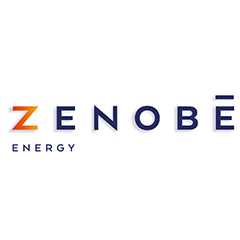Zenobe will provide a second-life battery to help power Extreme E’s team garages and broadcast infrastructure, in support of the series’ net-zero target
- Zenobe will provide a 120kWh second-life battery to help power Extreme E’s paddock operations as Extreme E’s Official Energy Storage Supplier.
- Formerly having powered an electric bus in Stockholm, Sweden, the second-life battery highlights the possibilities of a circular economy by providing Extreme E with a climate-friendly, green solution for its operations.
- Zenobe will be providing its service from the Ocean X-Prix in Senegal, taking place 29-30 May, onwards.
Zenobe, the UK’s leading independent owner and operator of battery storage and EV fleet specialists, will be providing a second-life battery to provide power to Extreme E’s site operations. These include the team garages and critical broadcast infrastructure, helping the series meet its net-zero target and highlighting the power of a circular economy.
The battery’s first life saw it operating in Sweden, where it helped bring cleaner air to Stockholm, powering an all-electric bus in the heart of the city. In this battery’s new life, it will utilise its remaining untapped capacity powering Extreme E’s site operations.
This battery has now been repurposed using Zenobe’s innovative second-life battery solution, and it will travel across the globe powering the Extreme E series as it races in locations that have been most affected by climate change.
Starting its new life, the former bus battery is on board Extreme E’s ship, the St Helena, which is due to arrive in Dakar today, ready to be put to work by Extreme E in Lac Rose, Senegal, to join the revolution of motorsport. It will be performing in some of the planet’s most extreme environments, including the bitter cold of the Greenland Arctic, the heat of the West African coastline, and the close humidity of the Amazon rainforest.
As the Official Energy Storage Supplier for the inaugural season of Extreme E, Zenobe’s second-life battery will allow the series to maximise the consumption of renewable energy generated onsite, helping Extreme E sustainably reinvent motorsport operations. In its first life on a bus, the battery saved nearly 1000 tonnes of CO2. In its second life, it will help Extreme E save roughly 15 tonnes of CO2 per year.
With this ground-breaking second-life battery, Zenobe is supporting Extreme E’s mission to encourage a more sustainable world. Through extending the life of the battery by many years, the project highlights the vast capabilities of batteries, even after their first life. As businesses across the globe look to reduce emissions and go green, this second-life battery project demonstrates the value of a circular economy and is the first of several upcoming second-life projects for Zenobe in 2021.
Steven Meersman, Co-Founder and Director at Zenobe, said: “We are proud to be partnering with Extreme E, an organisation that shares our passion for using electrification to enable a cleaner, greener future.
“Reusing is absolutely central to this. At Zenobe we are dedicated to advancing battery application with a particular focus on what happens to EV batteries at the end of their lives on vehicles. Our growing second-life battery operations solve this issue, as we reuse batteries from our electric fleets across Europe and close the loop.
“As the world continues to drive towards its net-zero goal, Zenobe is committed to leading the charge towards a circular economy, embracing second-life battery technology and championing its vast capabilities”.
Alejandro Agag, CEO at Extreme E said: “We are proud to be working with Zenobe to provide a second life for this former bus battery,
“As a series we are committed to minimising our carbon impact at all levels and becoming a platform for renewable energy solutions which have wider world use. This battery will now play a very important role in powering our paddock operations, ensuring that it is not just on the racetrack where we can showcase our low carbon solutions to everyday issues.”
The Extreme E season began with the inaugural race in Saudi Arabia on April 3 and will now visit Senegal (May 29-30), Greenland (August 28-29), Brazil (October 23-24) and Patagonia (December 11-12).
About Zenobe Energy Ltd. (Zenobe):
Zenobe is one of the largest independent owners and operators of battery storage with c.170MW of contracted storage assets, around 20% market share of the EV bus sector, its own proprietary software and a large portfolio of projects in the pipeline. Zenobe provides intelligent flexible power solutions to commercial EV fleet operators, utilities and industrial and commercial businesses. The company’s battery storage services help clients manage power more effectively so they can lower costs, improve resilience and reduce their environmental impact.
For more information, please visit www.Zenobe.com
About Extreme-E:
Extreme E is a radical new racing series, which sees electric SUVs competing in extreme environments around the world which have already been damaged or affected by climate and environmental issues. The five-race global voyage highlights the impact of climate change and human interference in some of the world’s most remote locations and promotes the adoption of electric vehicles in the quest for a lower carbon future for the planet.
To minimise local impact, Extreme E races are not open to spectators, with fans instead invited to follow the action through live TV broadcast, and on social media.
The St. Helena, a former passenger cargo ship, has undergone a multi-million Euro refit to minimise emissions and transform her into Extreme E’s operations hub. The ship is used to transport the championship’s freight and infrastructure, including vehicles, to the nearest port, minimising Extreme E’s footprint, as well as being used to facilitate scientific research through its on-board laboratory.
Extreme E is also pioneering hydrogen fuel cell technology which enables its race fleet to be charged using zero emission energy. This innovative solution from AFC Energy uses water and sun to generate hydrogen power. Not only does this process emit no greenhouse emissions, its only by-product is water, which is utilised elsewhere on-site.



























